Snow Joe 24V-SS12-XR Handleiding
Snow Joe
Sneeuwblazer
24V-SS12-XR
Bekijk gratis de handleiding van Snow Joe 24V-SS12-XR (44 pagina’s), behorend tot de categorie Sneeuwblazer. Deze gids werd als nuttig beoordeeld door 121 mensen en kreeg gemiddeld 4.1 sterren uit 61 reviews. Heb je een vraag over Snow Joe 24V-SS12-XR of wil je andere gebruikers van dit product iets vragen? Stel een vraag
Pagina 1/44

Original instructions.
© 2022 Snow Joe, LLC. All rights reserved.
A Division of Snow Joe, LLC Model 24V-SS12-XR Form No. SJ-24V-SS12-XR-880E-M
R
OPERATOR’S MANUAL
1
EN
CORDLESS SNOW SHOVEL
24V MAX* | 5.0 Ah | 12-INCH
*Initial no-load voltage, when fully charged, peaks at
24V; nominal voltage under typical load is 21.6V.
SAVE THESE INSTRUCTIONS
IMPORTANT!
Safety Instructions
All Operators Must Read These
Instructions Before Use
Read all instructions before using this cordless snow shovel.
Basic safety precautions should always be followed to reduce
the risk of re, electric shock and personal injury.
General Safety
You and any other operator of this snow shovel must read,
understand and follow these instructions in their entirety, and
should reread them at the start of each snow season. Failure
to follow these instructions may result in ELECTRIC SHOCK,
FIRE and/or serious PERSONAL INJURY.
Notice the personal safety alert symbol m used in this
manual to draw your attention to a WARNING given along
with the particular operating instruction. This means that
the operation requires special ATTENTION, CAUTION and
AWARENESS.
mWARNING! When using the power tool, basic safety
precautions should always be followed to reduce the risk of
fire, electric shock, and personal injury. These include:
• Keep work area clean and well lit – Cluttered, dark areas
invite accidents.
• Use the right product – Do not use this machine for any
job except that for which it is intended.
• Replacement parts – When servicing this unit, use only
identical replacement parts. Replace or repair damaged
cord immediately on the charger.
Do not use on gravel surfaces unless the snow shovel
is adjusted for such surfaces in accordance with the
operator’s manual.
• Keep children, bystanders and pets away – All
spectators, including pets, should be kept a safe distance
away from the work area.
• Dress properly – Do not wear loose articles of clothing or
jewelry. They can become caught in moving parts. Wear
rubber boots.
• Avoid accidental starting – Make sure the safety switch
and the on/off switch are in the off position before
inserting the battery in the unit. Do not carry the cordless
snow shovel with the safety switch and the on/off switch
engaged.
• Moving parts – Keep hands and feet away from moving
parts. Keep guards in place and in proper working order.
• mCAUTION! Exercise caution to avoid slipping or falling.
Wear protective footwear that will protect your feet and
improve your footing on slippery surfaces.
• Use safety glasses – Also use safety footwear,
snug‑fitting clothing and gloves.
• Stay alert – Watch what you are doing. Use common
sense. Do not operate the cordless snow shovel when you
are tired or under the influence of alcohol or drugs.
• Do not force the tool – It will perform better with less
likelihood of personal or mechanical injury if it is used at
the rate for which it was designed.
• Do not overreach – Keep proper footing and balance at
all times.
• If the cordless snow shovel strikes a foreign object, follow
these steps:
i. Stop the cordless snow shovel. Remove the battery.
ii. Inspect for damage.
iii. Repair any damage before restarting and operating the
snow shovel.
• Disconnect the tool – Turn off the power switch and
remove the battery when it is not in use, before servicing
it, when changing accessories and when performing any
other maintenance task.
• Store idle tool indoors – When not in use, the cordless
snow shovel should be stored indoors in a dry, locked
place out of the reach of children.
• Maintain the cordless snow shovel with care – Follow
the applicable maintenance instructions for replacing parts
and changing accessories. Lubrication is not required.
Battery & Charger
Safety Instructions
We pay a great deal of attention to the design of every battery
pack to ensure that we supply you with batteries that are safe,
durable and have a high energy density. The battery cells have
a wide range of safety devices. Each individual cell is initially
formatted and its electrical characteristic curves are recorded.
This data is then used exclusively to assemble the best
possible battery packs.
Despite all the safety precautions, caution must always be

2
exercised when handling batteries. The following points must
be obeyed at all times to ensure safe use. Safe use can only
be guaranteed if undamaged cells are used. Incorrect handling
of the battery packs can cause cell damage.
IMPORTANT! Analyses conrm that incorrect use and poor
care of high‑performance batteries are the main factors
responsible for product damage and/or personal injury.
mWARNING! To reduce the risk of injury, use only official
24V iON+ designated chargers and battery packs. The use of
other batteries or chargers poses a risk of fire, personal injury
and damage.
mWARNING! Do not use a battery pack or product
that has been damaged or modified. Damaged or modified
batteries may exhibit unpredictable behavior resulting in fire,
explosion or risk of injury.
Do not modify or attempt to repair the product or the battery
pack except as indicated in the instructions for use and care.
Do not wire a battery pack to a power supply or car cigarette
lighter, as such misuse will permanently disable or damage the
battery pack.
Have your battery pack serviced by a qualied repair person
using only identical replacement parts. This will ensure that the
safety of the battery pack is maintained.
mWARNING! To reduce the risk of electric shock,
always unplug the charger before performing any cleaning
or maintenance. Do not allow water to flow into the charger.
Use a Ground Fault Circuit Interrupter (GFCI) to reduce shock
hazards.
• Remove battery – Remove the battery pack from the tool
when not in use, before servicing, or before performing
any other maintenance task. Never leave the tool
unattended while switched on. In the event of an accident
or breakdown, switch off the tool immediately.
• Avoid dangerous environments – Do not charge the
battery packs in rain, snow or in damp or wet locations.
Do not use the battery pack or charger in the presence
of explosive atmospheres (gaseous fumes, dust or
flammable materials) because sparks may be generated
when inserting or removing the battery packs, which could
lead to a fire.
NOTE: The safe temperature range for the batteries are
41°F (5°C) to 105°F (40.5°C). Do not charge the batteries
outside in freezing weather; charge them at room
temperature.
• Charge in a well‑ventilated area – Do not block the
charger vents. Keep them clear to allow for proper
ventilation. Do not allow smoking or open flames near a
charging battery pack. Vented gases may explode.
• Maintain charger cord – When unplugging the charger,
pull the plug, not the cord from the receptacle to reduce
the risk of damage to the power cord. Never carry the
charger by its cord. Keep the cord away from heat, oil and
sharp edges. Make sure the cord will not be stepped on,
tripped over or subjected to damage or stress when the
charger is in use. Do not use a charger with a damaged
cord or plug. Replace a damaged charger immediately.
• Do not use an extension cord unless it is absolutely
necessary – Using the wrong, damaged or improperly
wired extension cord poses a risk of fire and electric
shock. If an extension cord must be used, plug the
charger into a properly wired 16 gauge or larger extension
cord with the female plug matching the male plug on the
charger. Make sure that the extension cord is in good
electrical condition.
• Do not expose the machine or battery packs to fire –
Exposure to fire or temperatures above 265°F (130°C)
may cause the battery packs to explode, causing personal
injury or damage. Toxic fumes and materials are created
when battery packs are ignited.
• Do not crush, drop or damage battery packs –
Do not use the battery packs or charger if they have
sustained a sharp blow, been dropped from a height
of more than 3 feet (1 meter), run over or have been
damaged in any way. Even if the housing of a battery
pack appears to be undamaged, the battery cells inside
the battery may have suffered serious damage. In such
instances, please read the waste disposal information for
proper battery disposal.
• Do not disassemble – Incorrect reassembly may pose
a serious risk of electric shock, fire or exposure to toxic
battery chemicals. If the battery or charger is damaged,
contact an authorized Snow Joe® + Sun Joe® dealer or
call the Snow Joe® + Sun Joe® customer service center at
1‑866‑SNOWJOE (1‑866‑766‑9563) for assistance.
• Battery chemicals cause serious burns – Never let a
damaged battery pack contact the skin, eyes or mouth.
If damaged, battery chemicals will react violently with air.
Use rubber or neoprene gloves to safely dispose of the
battery. If skin is exposed to battery chemicals, wash the
affected area with soap and water. If eyes are exposed
to battery chemicals, immediately flush with water for 20
minutes and seek medical attention. Remove and dispose
of contaminated clothing.
• Risk of short circuit – A battery pack will short circuit if
a metal object makes a connection between the positive
and negative contacts on the battery pack. Do not place a
battery pack near anything that may cause a short circuit,
such as paperclips, coins, keys, screws, nails and other
metallic objects. A short‑circuited battery pack poses a
risk of fire and severe personal injury.
• Store your battery packs and charger in a cool, dry
place – Ideally, store the battery packs at 59°F (15°C) and
charged to at least 40%. Do not store the battery packs or
charger where temperatures may exceed 105ºF (40.5ºC),
such as in direct sunlight or inside a vehicle, or where
temperatures may drop below 41°F (5°C).
NOTE: Prevent the battery packs from freezing. Battery
packs that were stored below 32°F (0°C) for more than 60
minutes must be discarded.
• Charge before use – The battery pack supplied with your

3
machine is only partially charged. The battery pack must
be fully charged before using the shovel for the first time.
• Lithium‑ion batteries are subject to a Battery Aging –
natural aging process. A battery pack must be replaced at
the latest when its capacity falls to just 80% of its capacity
when new. Weakened cells in an aged battery pack are no
longer capable of meeting the high power requirements
needed for the proper operation of your machine, and
therefore pose a safety risk.
• Do not exhaustively discharge battery packs –
A complete discharge will damage the battery cells. The
most common cause of exhaustive discharge is lengthy
storage. Stop working as soon as the performance of a
battery falls noticeably or the electronic protection system
triggers. For optimum battery performance, charge the
battery packs frequently. Place the battery packs in
storage only after they have been fully charged.
• Do not overload battery packs – Protect the shovel and
battery from overloading. Overloads will quickly result in
overheating and cell damage inside the battery housing
even if it is not apparent externally. For safety reasons, the
integrated protective cutoff will activate to switch off the
equipment. After regular use, allow the battery packs to
cool to room temperature before recharging them.
IMPORTANT! Do not attempt to turn on the machine if the
protective cutoff has been activated. This may damage
the battery packs.
• Outlet voltage – Please check the data marked on the
rating label of the battery charger. Be sure that the voltage
of the power supply matches that marked on the rating
label. Never connect it to a different mains voltage.
• Charger use – Do not use the supplied battery charger to
charge other types of battery packs or tools.
• Do not overcharge battery packs – Do not exceed the
maximum charging times. Frequently overcharging the
battery packs will result in cell damage. Do not leave
battery connected to the charger for days on end.
• Battery pack abnormalities – Do not use batteries that
have suffered swelling or deformation or those that exhibit
other atypical symptoms (gassing, hissing, cracking, etc.).
• Electrostatic discharge – When handling batteries, be
wary of electrostatic charge. Electrostatic discharges can
damage the electronic protection system and the battery
cells. To avoid electrostatic discharges, never touch the
battery terminals.
Product specificaties
| Merk: | Snow Joe |
| Categorie: | Sneeuwblazer |
| Model: | 24V-SS12-XR |
Heb je hulp nodig?
Als je hulp nodig hebt met Snow Joe 24V-SS12-XR stel dan hieronder een vraag en andere gebruikers zullen je antwoorden
Handleiding Sneeuwblazer Snow Joe

27 Februari 2024

3 Augustus 2023

16 Juni 2023

16 Juni 2023

12 Juni 2023

29 Mei 2023

26 Mei 2023

25 Mei 2023

21 Mei 2023

14 Mei 2023
Handleiding Sneeuwblazer
- Gude
- Jonsered
- Black And Decker
- Lumag
- Karcher
- Texas
- Cotech
- Ergie
- Cocraft
- Toro
- Antari
- Husqvarna
- Power Craft
- Biltema
- Anova
Nieuwste handleidingen voor Sneeuwblazer
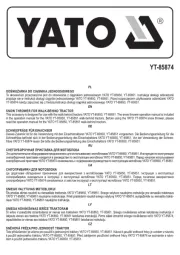
15 Juli 2025
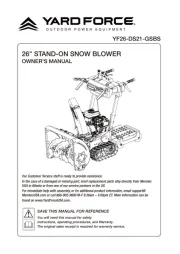
20 Mei 2025
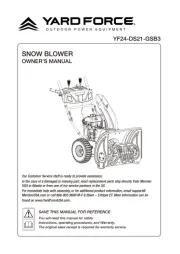
20 Mei 2025
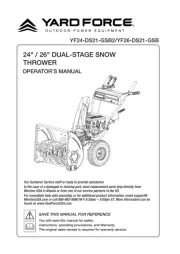
15 Mei 2025
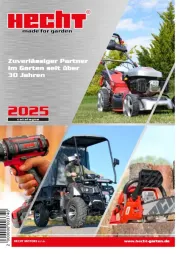
27 Januari 2025
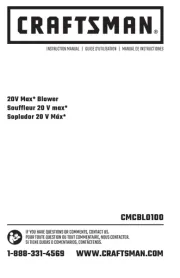
27 Januari 2025

9 December 2024

4 December 2024

4 December 2024
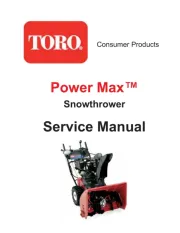
19 November 2024